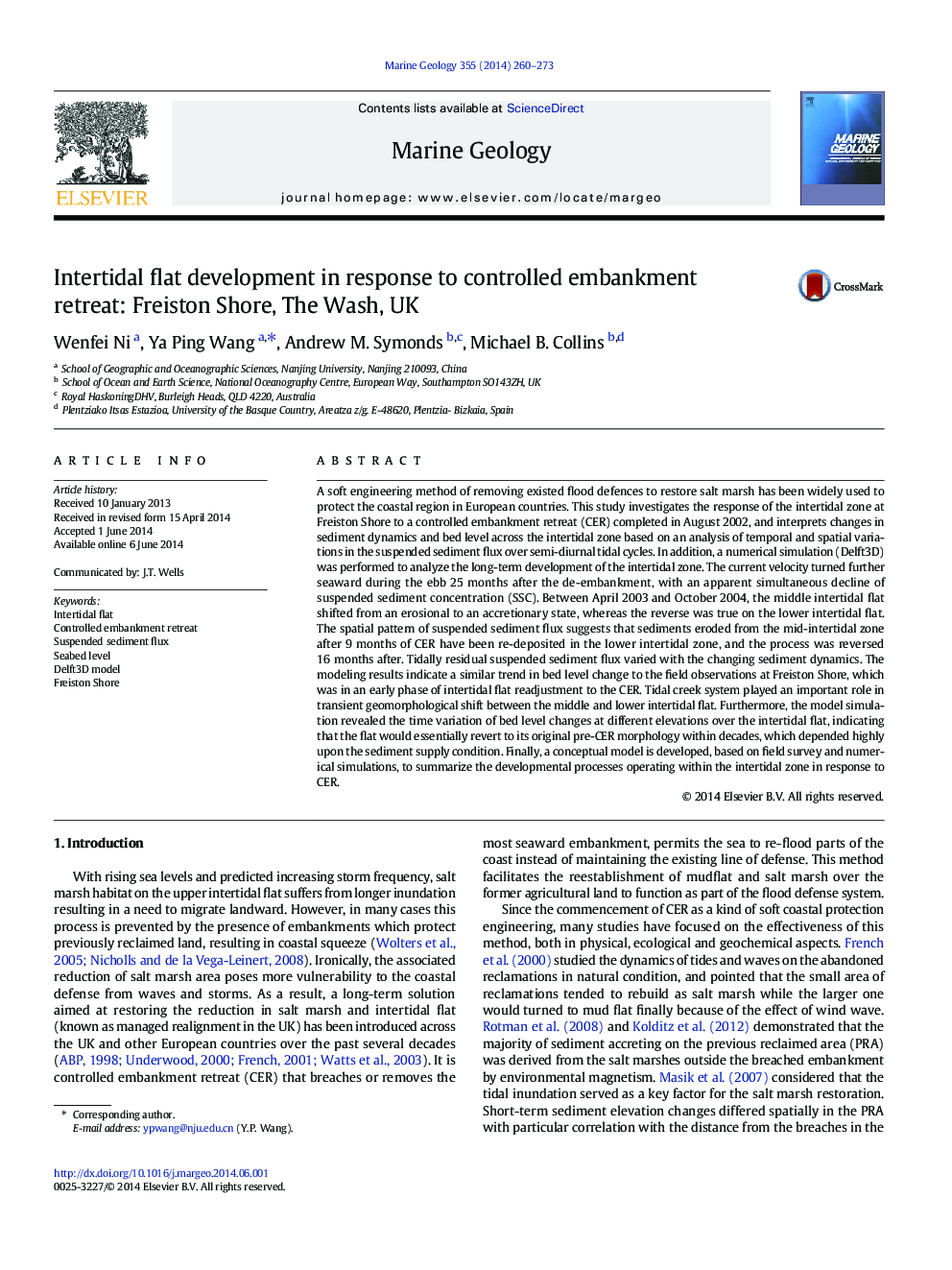| Article ID | Journal | Published Year | Pages | File Type |
|---|---|---|---|---|
| 4718277 | Marine Geology | 2014 | 14 Pages |
•Sediment flux analysis was applied to study bed level changes over intertidal zone.•A numerical simulation was performed to forecast long-term tidal flat development.•A conceptual model was developed to summarize flat development phases.•The tidal flat would revert to its original pre-CER morphology within decades.
A soft engineering method of removing existed flood defences to restore salt marsh has been widely used to protect the coastal region in European countries. This study investigates the response of the intertidal zone at Freiston Shore to a controlled embankment retreat (CER) completed in August 2002, and interprets changes in sediment dynamics and bed level across the intertidal zone based on an analysis of temporal and spatial variations in the suspended sediment flux over semi-diurnal tidal cycles. In addition, a numerical simulation (Delft3D) was performed to analyze the long-term development of the intertidal zone. The current velocity turned further seaward during the ebb 25 months after the de-embankment, with an apparent simultaneous decline of suspended sediment concentration (SSC). Between April 2003 and October 2004, the middle intertidal flat shifted from an erosional to an accretionary state, whereas the reverse was true on the lower intertidal flat. The spatial pattern of suspended sediment flux suggests that sediments eroded from the mid-intertidal zone after 9 months of CER have been re-deposited in the lower intertidal zone, and the process was reversed 16 months after. Tidally residual suspended sediment flux varied with the changing sediment dynamics. The modeling results indicate a similar trend in bed level change to the field observations at Freiston Shore, which was in an early phase of intertidal flat readjustment to the CER. Tidal creek system played an important role in transient geomorphological shift between the middle and lower intertidal flat. Furthermore, the model simulation revealed the time variation of bed level changes at different elevations over the intertidal flat, indicating that the flat would essentially revert to its original pre-CER morphology within decades, which depended highly upon the sediment supply condition. Finally, a conceptual model is developed, based on field survey and numerical simulations, to summarize the developmental processes operating within the intertidal zone in response to CER.
